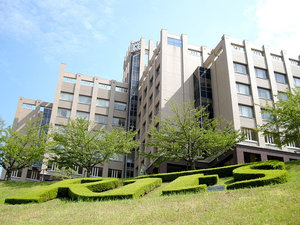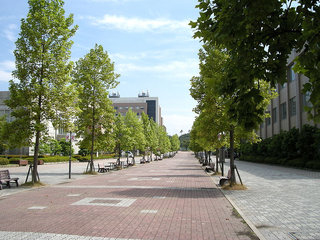Building the VPH community - report
Several members of the ABI attended the IUPS 2009 satellite symposium "Building the Virtual Physiological Human Community" on the 26th of July. The event was hosted by Dr Akinori Noma's group at the Biwako-Kusatsu Campus of Ritsumeikan University, Japan. The symposium was a chance for members of the international modelling community to come together to discuss issues facing the VPH and Physiome efforts.
The notes below were taken by members of the CellML team, who were present at the meeting, and they are subject to personal interpretation. If you have any corrections please contact us and we will be happy to incorporate them.
The IUPS Physiome Project: Past, Present, and Prospects
Professor Denis Noble, University of Oxford
The symposium was opened with a presentation from Professor Denis Noble, who began by outlining the history of mathematical modelling of biological systems - beginning in 1628 with William Harvey's calculations concerning the circulation of blood, and continuing through Hodgkin and Huxley's seminal work to today's increasingly complex models. Denis highlighted the fact that all models are wrong – the important question we must ask how they are wrong, and whether they provide a useful insight into an underlying physiological process.
Denis went on to say that we need a paradigm shift - a move towards integrative modelling, which he called "unravelling complexity". He highlighted the fact that in biological systems, influence and cause flow in both directions along the axis that leads through organism, organ, tissue, cell, sub-cellular space, pathway, protein, and gene. Denis examined some of the problems that arise from trying to study and understand the isolated components of these systems; for example, a study by Hillermeyer et al. shows that 80% of gene deletions have no visible effect on phenotype. Redundancy means that it is often very difficult to tease out the workings of a pathway through the use of knockouts. Denis said that using models to perform "reverse engineering" is one solution - for example, using a model to work out which components of a pathway are buffering the function of a knockout.
Denis then began to outline future challenges and directions - the need to increase the integrative aspects of modelling, connecting the various levels into a functional whole. He made the point that there is no privileged level of causality in biological systems, making multi-level modelling essential. There are a number of practical problems to be tackled in the near future, such as scale relativity to provide consistent mathematics from organism to gene. Denis also pointed out the importance of providing practical tools for surgeons, drug companies, and others in order to secure future funding. He went on to say that we also need to convince experimentalists of the importance and usefulness of modelling, and to maintain close links with them.
Standardisation and markup languages: potential and limitations
Dr Michael Hucka, California Institute of Technology
A second talk of particular interest to the CellML group was presented by Mike Hucka, the Chair of the SBML team. His presentation was about the standardization of mark-up languages, in which he emphasized the need for effective ways to share models which are software independent. His presentation naturally focused on SBML and related efforts, and he began by first describing the basic features of SBML. Mike emphasized the fact that SBML is a machine-readable XML format, and is not meant to be human-readable - that is what the tools are for! SBML has an enviable collection of tools, with more than 170 pieces of software currently known which support SBML in some way. Mike outlined a few of the ways in which the SBML community fosters development and collaboration through meetings, hackathons, and the website. Another important aspect in enabling the widespread support of SBML is the LibSBML API library, which supports a large number of programming languages.
Mike said that "standards have the potential to coalesce community efforts". He highlighted the importance of engaging people and having community buy-in to the development of the standards. He said that ground-up development of standards can work - that is, development based on community requirements and feedback. Mike also said that a patchwork of standards is to be expected, although some consolidation of these standards may occur over time.
Data- and Model-sharing: Technical Limitations
Dr David Nickerson, Auckland Bioengineering Institute
David Nickerson gave a presentation on data and model sharing in which he outlined the requirements for effective sharing and collaboration in modelling:
- unrestricted access to data and tools;
- a standard machine-interpretable way of describing your model; and
- comprehensive, unambiguous resource descriptions.
David gave an example where a large cell model might be made up of CellML (for channels), SBML (for pathways), experimental data, parameter estimation, stimulus protocols, numerical methods, and MIASE and/or SED-ML (for simulation information). All of this information is required to effectively share a model. David then continued by saying that if you have all this information to be shared, you require a method to share it - a repository. He described the Physiome Model Repository 2 (PMR2), outlining its basis as a distributed version control system that can store whatever kind of data users want - it is not specific to CellML.
David then went on to examine some of the other challenges we face in data and model sharing - for example, the current methods of conversion between formats such as SBML, MATLAB and CellML are not lossless - we need a method to capture all of the model development history (or model provenance) in the metadata, and maintain this information throughout the conversions. A challenge specific to CellML is that we do not have enough tools or documentation. David said that we need to continue to work on the CellML API, and also look at using existing standards such as SED-ML in order to avoid duplication of effort.
Discussion of joint statement regarding model and data access
Chaired by Peter Kohl and Marco Viceconti
The main part of the day concluded with a discussion on free sharing of data and models, which began with a pair of opposing presentations from Peter Kohl and Marco Viceconti. Peter played devil's advocate (on behalf of James Bassingthwaite), presenting all the negative aspects of free and open access to data and models. Marco followed up by countering with a list of positive aspects, and there followed a lively discussion about the challenges and opportunities that face the modelling community. An issue that was discussed extensively was the effect that free and open sharing of models may have on the careers of young researchers.
For further notes on this debate please see Abhishek Tiwari's "Fisheye Perspective".
Presentations from the day can be found on the VPH NoE site.



